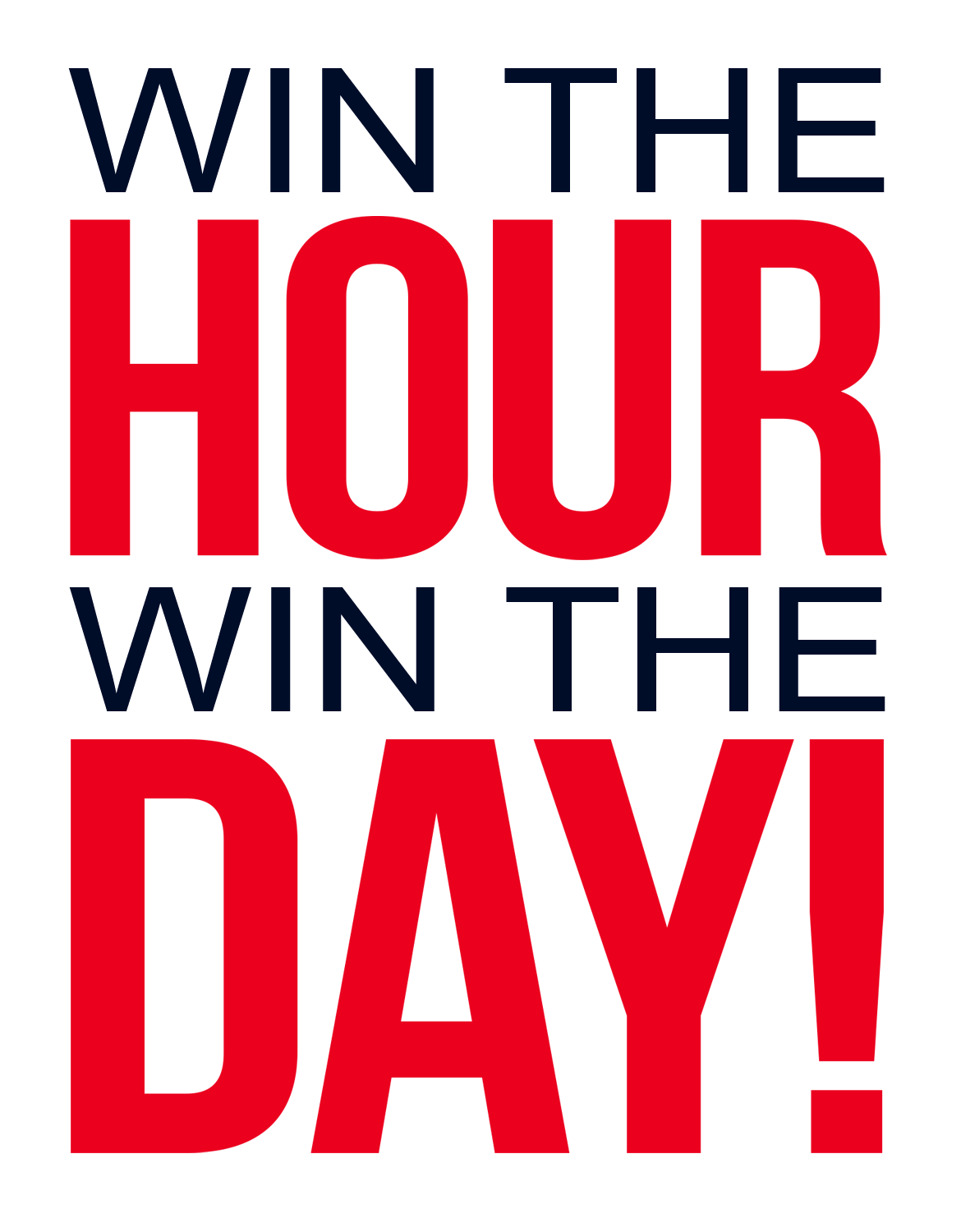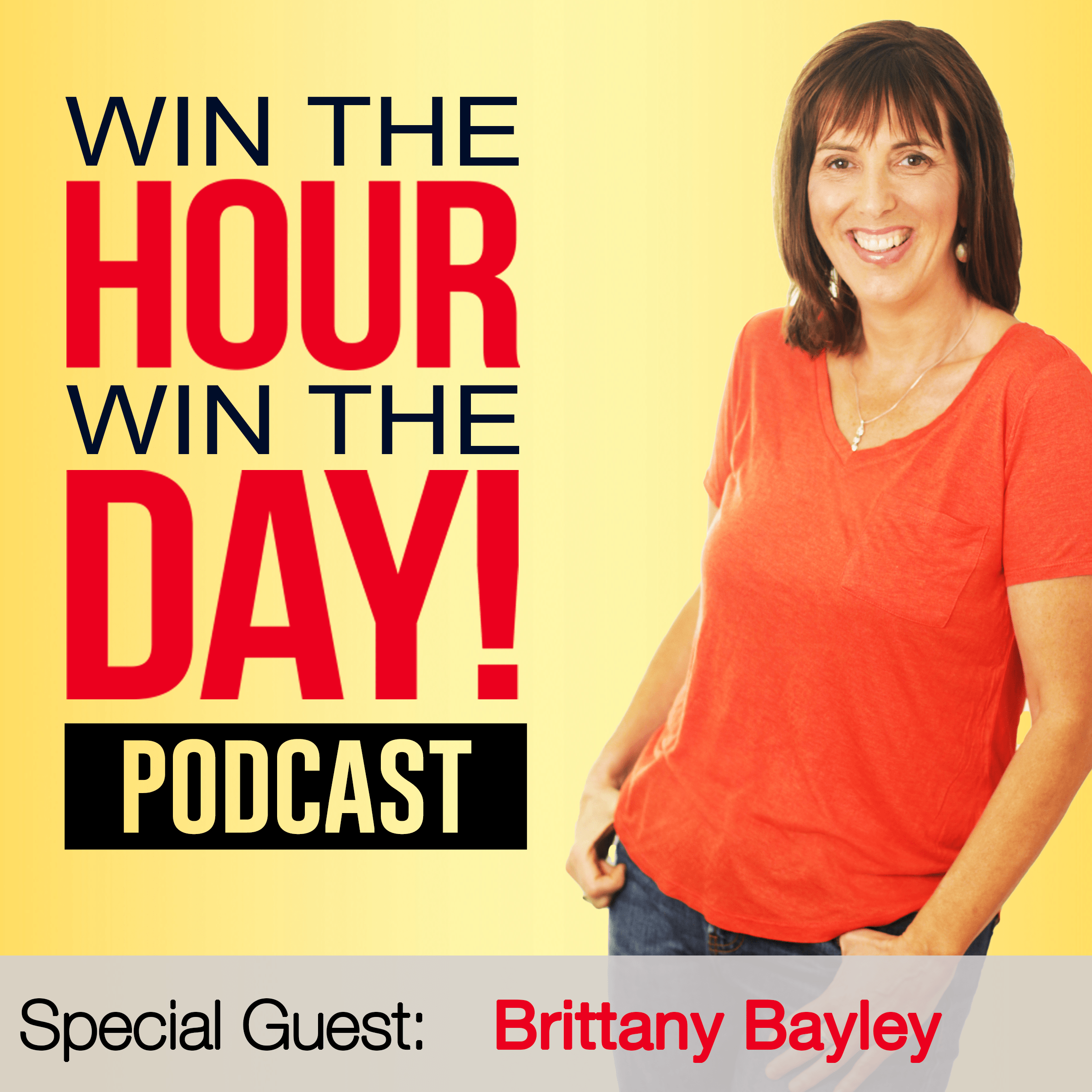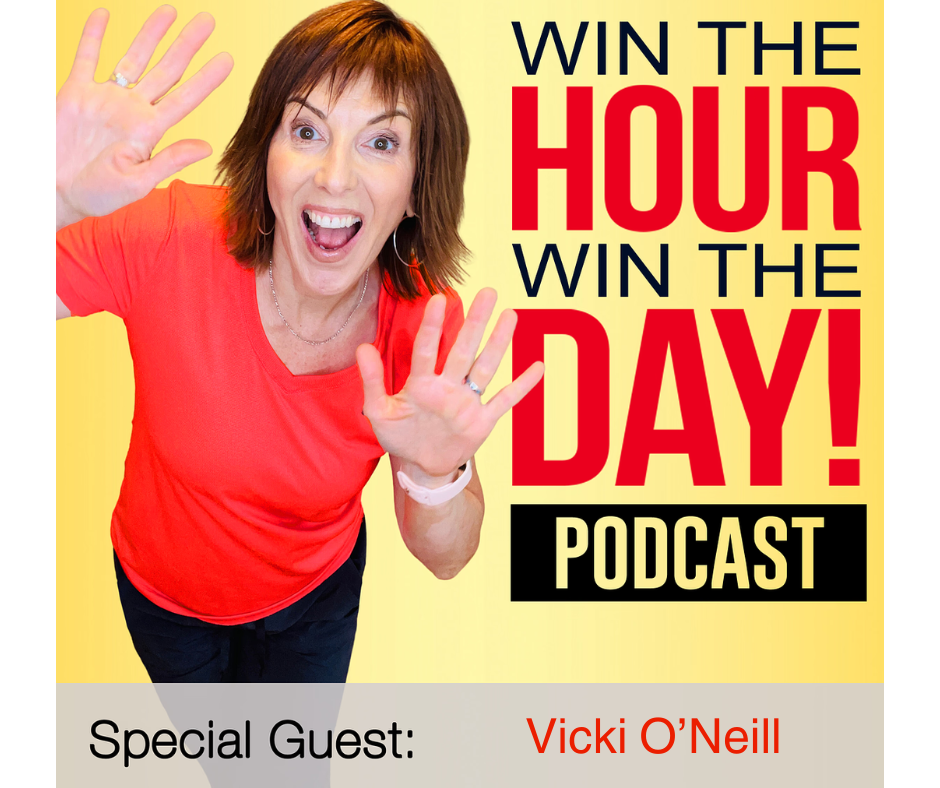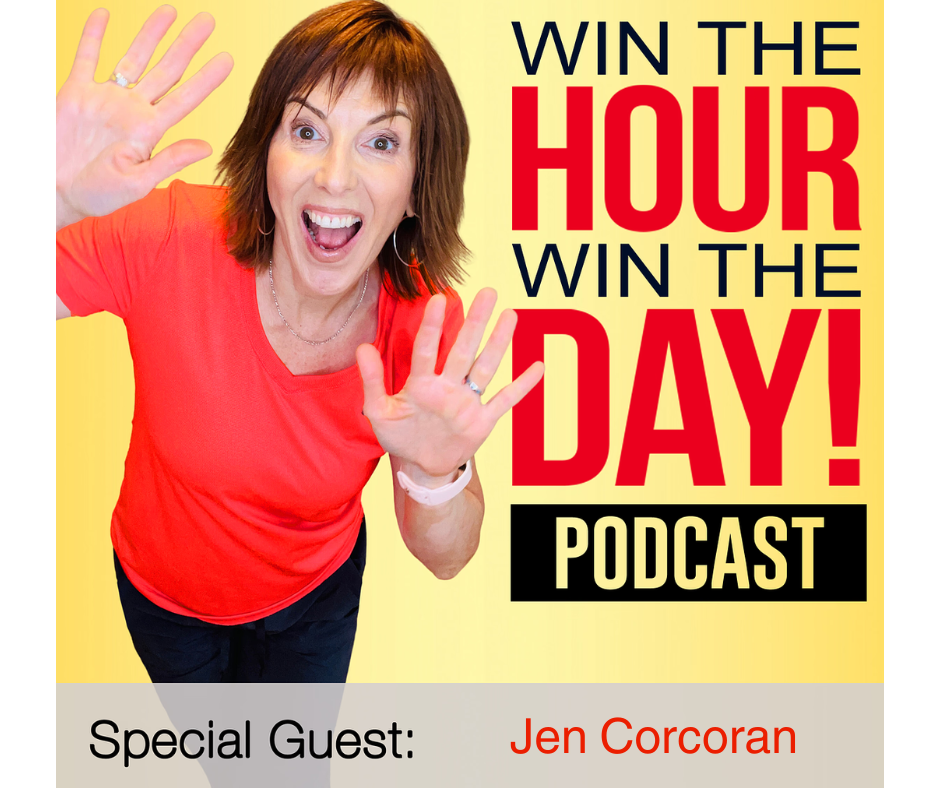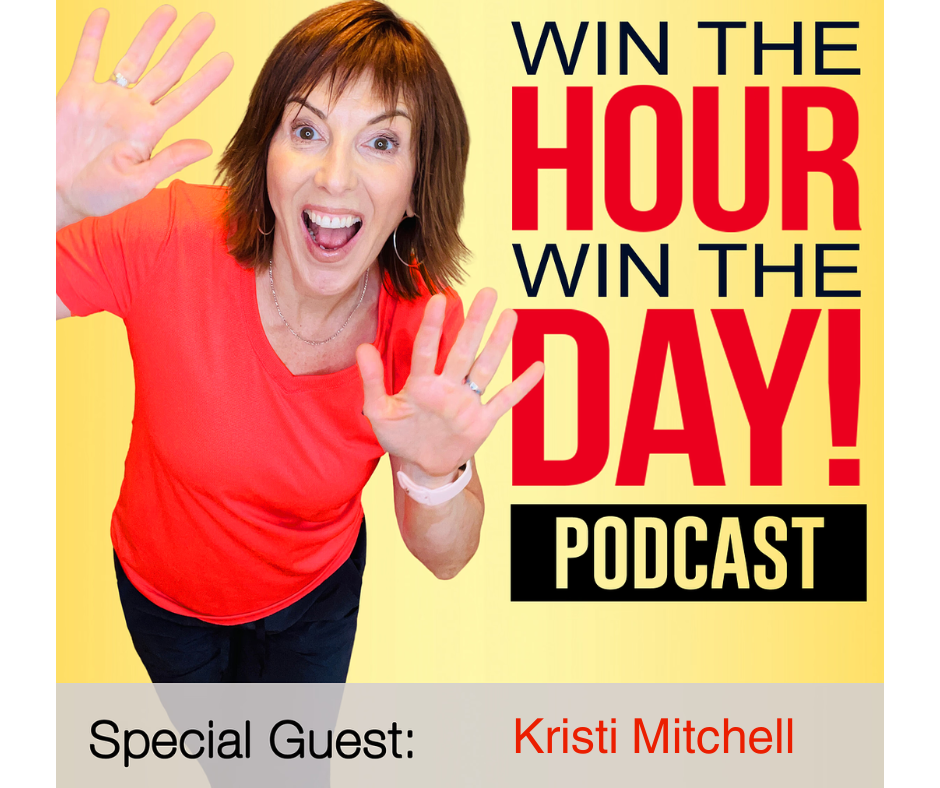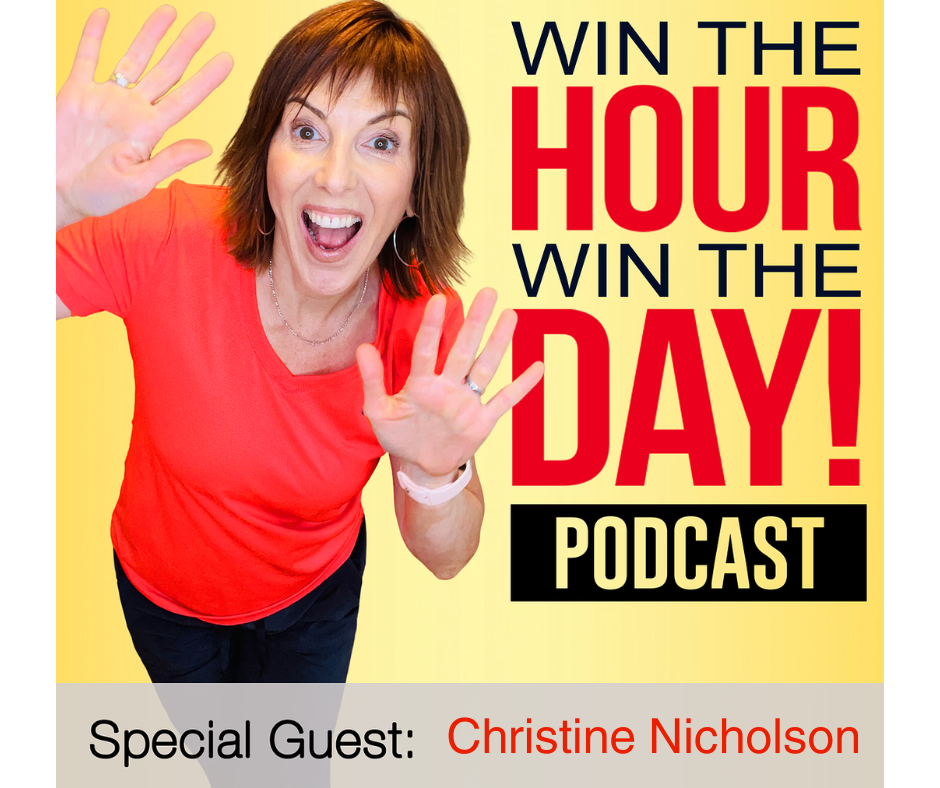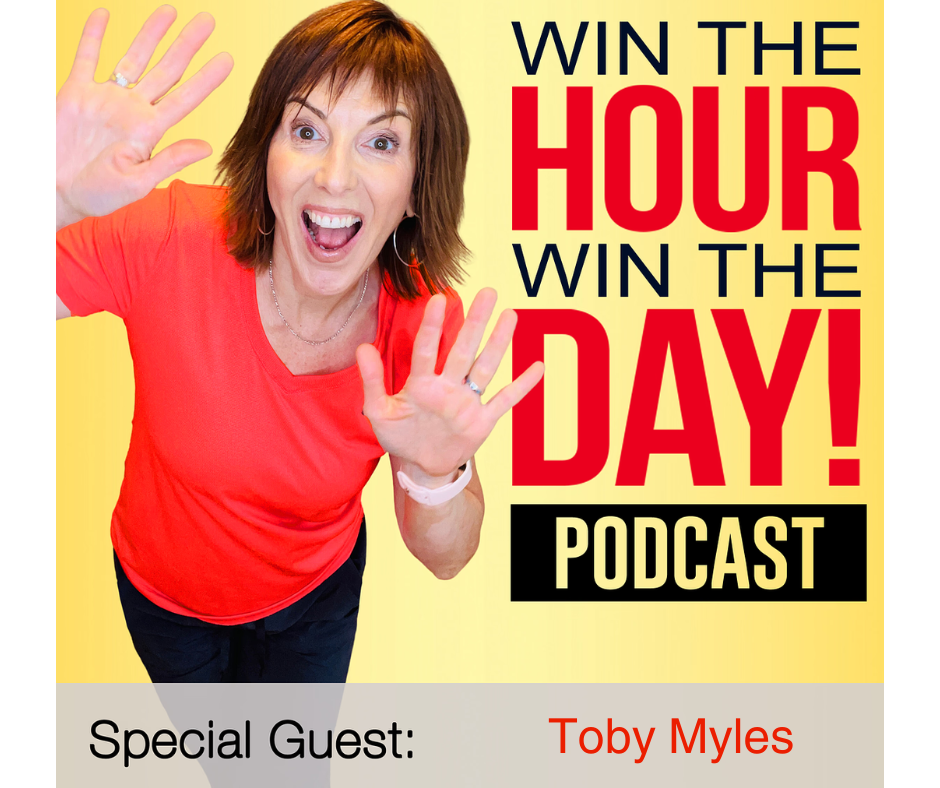Episode Summary
Brittany Bayley really opens our eyes to email marketing. Listen in as she enlightens us about email marketing and sets us up for success.
Learn
-the 3 pillars of email marketing and why it’s so important
– how to avoid the #1 mistake in email marketing
– why email marketing is essential to your business
And MUCH more!
You can find Brittany Bayley at:
Website: https://brittanybayley.com/
Email: hello@brittanybayley.com
Instagram: @BrittanyBailey
LinkedIn: https://www.linkedin.com/in/brittanybayleylive/
Facebook: https://www.facebook.com/brittanybayleylive
Podcast: Sit with Brit
Win The Hour Win The Day
https://winthehourwintheday.com
Brittany Bayley Podcast
[00:13:32]Kris Ward: Hey, everyone. Welcome to another episode of Win The Hour, Win The Day and I am your host, Kris Ward, and today in the house we have Brittany Bayley. Okay. I am so excited you’re here, Brittany. Welcome to the show.
[00:13:46]Brittany Bayley: Thank you so much.
[00:13:48]Kris Ward: Okay, Brittany. Now I think she paused. Cause usually you give a big old me amble and all that stuff about your bio, but we just jump into it.
[00:13:55] Brittany. We don’t mess around here. We want tangible takeaways. Okay. So why you’re here, Brittany, you’re going to talk to us about email marketing, about keeping our list engaged and listen. I’m going to tell you right off the bat. I am not good at that. I was going to say, I’m awful, but there’s, that’s limiting my growth, but it’s hit and miss.
[00:14:14] So I’ll get all up on it for a couple of months and say, okay, this is what you should do. And I know you should do it. But then I think, I don’t know what I like what I’m sending them. And here’s some tips or here’s something that happened to me on the weekend. Does anybody care? And so then I lose momentum and I think my energy should be put somewhere else. So tell me why I’m wrong. I know I’m messing this up. But how do I fix it?
[00:14:38]Brittany Bayley: I don’t think you’re wrong. I actually, in all of the years that I’ve been doing this, which is six, I have not connected with an entrepreneur who didn’t have that experience. Because the thing is we all have busy lives and we all have a lot of things on our plate.
[00:14:53] And email marketing is one of those things where it’s accumulative effect. And so if you do it like for a couple of weeks, you’re not probably going to see an immediate, massive spike in ROI and massive response. And so it’s one of those things that’s like a slow burning fire. So it’s kind of understandable why entrepreneurs experience that, but it’s also why I, myself, as an email marketer, I’m like, oh my gosh, you guys have to do this because when you get to a point in your business where you really need email marketing, like say your Facebook ad account gets shut down, then you’re having to start the slow burn then. So it’s understandable, but that’s why I am so passionate about talking about this.
[00:15:40]Kris Ward: Okay. So those are some good points. It kind of, I always compare things to fitness and health because everybody, at some point in their life have wanting to lose five pounds. Right. And it’s kind of like, you know, and you think, okay, that’s it, I’m turning this around.
[00:15:52] You know, I just felt awful for whatever last week. And you really clean up your diet, or I try to be health focused. I’ve got people in my life that will be like, okay, But I, you know, I’ve done this for three days now and I don’t see a difference. Okay. You know, you’re not going to lose all the weight by Thursday.
[00:16:07] So I think that’s what you’re saying here is like, that’s great, Kris, even if you did it for even a couple months, it’s accumulation. So that’s a powerful word that you said there I’m like, oh, well I can’t argue that. Cause I didn’t accumulate very long. I mean, I did, I would be loyal for it for like five months and then off for whatever.
[00:16:26] Okay. So accumulation, powerful word. It’s going to haunt me. Right? Cause now you can’t argue against it. Like, well, I got to wait and see this out and I agree with you a hundred percent. We all know. We know, we know that we can’t defend on the socials there. So moody. And I’d love to have a business like Facebook, where I can just eliminate people, shut them down or do whatever.
[00:16:46] And then you don’t even have customer service. You can’t even call and say, well, you were wrong. And here’s what you did. Now. Let me back up. I don’t think I would love to have that business, but they do have quite a, uh, clobber and affirm hand and a moody hand at that. So we know it’s important. So then what am I putting in these email broadcasts? How long should they be? What am I doing right or wrong or anything?
[00:17:08]Brittany Bayley: Yeah. So really email marketing. I look at as having three pillars. So we have one pillar that is our, what I call core sequences, staple sequences, whatever you want to call them. These are evergreen sequences that you are sending out consistently.
[00:17:25] Then we have our segmentation, which is kind of like the tech side of things. It’s making sure that we are leveraging those core sequences. Meaning when somebody joins Product A, they’re getting a sequence for Product B and that’s only possible if we’re segmenting correctly. And then pillar three is our ongoing content.
[00:17:46] So this is content that we’re sending out week to week to week. And what I find with a lot of entrepreneurs is they skip to column C or pillar C. And they just want to start emailing their list, which is great. But if we don’t have these other two things in place, we’re not really going to be able to pull cash off the table from our list. And so I always like to look at it in this holistic way that there’s three pillars to content marketing.
[00:18:10]Kris Ward: Okay. So. All right. I agree with you. So we’re all just going well, we should email the list and we do it, and then we fall off the wagon and we crawl back on all that stuff. Fabulous. Now, for those of us who are not doing a lot of products out there, let’s just say we definitely have had info products and stuff like that.
[00:18:29] For the bulk of it, we do coaching, we’ve got the Winners Circle. We’ve got things like that. And we may be promoting that. So when they come into the list, see, my theory is that they’re all at this point, I’m dealing with entrepreneurs, who’ve been in business at least five years, their service based.
[00:18:47] They’re doing well, but they’re still working too hard for what they’re doing. So they may look good on paper and with thinks, oh yeah, you’ve got it figured out, but they don’t realize the amount of hours and grind they’re still putting in there. Right. So. Then I guess I would think, how am I segmenting that? Is it possible? Am I naive to think I could have one group that they’re really not that segmented?
[00:19:10]Brittany Bayley: Yeah. If you have just one main product, then you might not need to do a lot of segmentation. So typically when I look at segments, I have two for every product. So one is clicked and one is customer. So if I have a Product A, okay.
[00:19:25] Then anybody who was sent the promo emails for Product A and clicked on them, but did not buy, they are a clicked segment. So I know that later when I relaunched Product A, I’m going to that list first because they’re already warm. Then I have a customer.
[00:19:44]Kris Ward: Hold on, let me, let me just pause you there just to understand. So I could be doing for the Winners Circle. We tend to all think about product like, you know, info products, but I could be saying, okay, we’ve got this new program, theWinners Circle guarantee you’re gonna love it. It’s a different price point and really easy investment for you guys to get the same results as the private coaching.
[00:20:02] So I could put a message out there. And then the ones that show any interest or click in any capacity. Now we segment them. So I was thinking the segment in a segmentation had to happen as soon as they came in and it could, but I can also segment them later.
[00:20:17]Brittany Bayley: Yeah, exactly. It can definitely happen as soon as they come in. If you want to say these people clicked on my podcast link. Cause I put that in my onboarding sequence or whatever. So it’s really like it’s interest driven and that allows you to create sequences that are going to convert higher because you are sending them directly to people who have already told you they like podcasts or directly to people who already told you, they prefer physical books rather than audio books or whatever.
[00:20:48] So you’re able to really reach the people who you want to reach. It gives you higher open rates, gives you high conversion rates, all the good things. So segmentation is really critical, but it’s not talked about a lot.
[00:21:00]Kris Ward: No, I think you bring up some really good points because I think we all, or I did, I can’t speak for everybody else’s silliness. My mindset was like, okay, if I’ve got Product A’s info product, whatever, we’ll call it. Don’t pull your hair out. You’re too busy. Info-products seven week course. And then product B is our Outsourcing Playbook for Busy Entrepreneurs and Product C. So I thought, oh, those are it, but they could just be, like you said, interest driven.
[00:21:24] So we know that they opted in because they something on our podcast page. Great. All right. They’re over here. So I was just thinking like physical products that you would sell to make money on determine it, but this whole idea of interest in the segmentation. Even though it’s the same. Maybe I’m covering the same topic.
[00:21:42] Whether they read my book or heard the podcast, or came in a different way, that’s a whole different thing. Right. And I guess it would also even determine, let’s say they got my free audiobook, so then maybe I’m going to send them more audio type stuff because they’ve shown interest in that. Okay.
[00:21:59] All right. That’s okay. That’s aha moment there. Okay. When we’re doing the ongoing emails, as I said, I struggle with that. What are some rookie mistakes we’re all making there?
[00:22:16]Brittany Bayley: I think honestly, just overthinking it is the number one mistake I see. So really when we’re talking about onboarding sequences, I have two different emails that I recommend.
[00:22:28] And so the first one is external driven. So it is for you. It’d be a great example. Hey, we have a new episode of the podcast. And so what that email is doing every single week is training your subscribers to look for an email from you that makes them click to go somewhere else. So our click-through rate is what we’re really building in that ongoing email.
[00:22:51] So every single Tuesday, for instance, you have a new episode come out and you send an email that says, Hey, we have a new episode. It’s this person we learned this, open the curiosity loop and send them to, wherever they listen to podcasts. So that’s email number one. Email number two is more story content driven.
[00:23:12] And I typically either don’t put a link in it or just put one like evergreen funnel link in it. It’s very much supposed to nurture our open rates. So really we have two data points in email marketing that are really, really important click rates and open rates. So if we are doing these two kinds of emails, every single week, we are continuing to show our email service provider that people are clicking and reading our emails.
[00:23:38] And so the second email is very story-based. Content-based here’s a lesson that I learned while I was, doing X, Y, and Z. And that comes, maybe every Thursday and you were training your subscribers to open emails from you because they’re learning something from you every single Thursday.
[00:23:57] So really those two emails are all we need to do. I see entrepreneurs overthink it. They think they have to email every single day. They think they have to email, 2000 word emails or something like that. And really we don’t have to do that.
[00:24:10]Kris Ward: Okay. I got a whole bunch of questions here. So number one, in the first one where you say, ‘okay, I’d send it up to say, here’s my podcast for the week. Here’s my link.’ Now, I guess, you know, you start, I know this in business, you hear all these little things that will, yes, that’s true. But it doesn’t apply here and you can’t take it as gospel.
So one of the other things we’ve had other people in the shows that be mindful, it’s better if you don’t have links in the email, because a lot of the providers like search for that.
[00:24:34] Right. So, but I guess what you’re saying is, even if that’s true now we’ve got two options. We’ve got the email link and then we’ve got one without a link.
[00:24:42]Brittany Bayley: Yes. So really when it comes to promotional, like landing in the promo tab, it has, there’s so much there because it’s really like it kind of is this it’s a scale.
So if you run your email through a promotional filter, like there’s these ones online, you can say, like is not spam.com is one of them, where basically you send your email to a unique email address. And they tell you what your spam score is or what the probability of you going into promo tab is. So there’s a lot of different reasons that you would land in promo excessive graphics. Really like high density of..
[00:25:25]Kris Ward: Hold on. When you say excessive graphics, you mean too many pictures, right?
[00:25:29]Brittany Bayley: Yes, because it almost sounds like porn, like excessive porn, although probably yes. That would land you in Spam. No porn. It, lots of no porn, lots of graphics. Lots of links. So this is where the misconception comes from.
[00:25:45] It’s not lots of this same link, it’s emails that have like seven links to seven different places. Okay. So typically I say like three is a good number and it would be three of the same link. So it’s three links that go to your podcast. So that’s not going to trip a spam filter and let’s you have a lot of other things going on.
But if you’re saying, Win The Hour, Win The Day link up here, down here and then in the PS, It’s a link also. That’s not going to send you to spam.
[00:26:20]Kris Ward: Perfect. Okay. That’s a great clarification. And then number two, my question is when you talk about story-driven, so my fear was I was doing stories and I may have been doing it from the wrong angle.
[00:26:32] So in one hand, I might like, so yesterday I had a client and she was like, she’s new to us. And she was just full Lord. Cause she went away for three weeks and she came back and usually, no, sorry. She went away for a week. My apologies. She went away for a week and she came back and she says, usually I call the snow banking.
[00:26:48] You go away and you think, oh, I had a week off, but no, you just, you don’t get rid of the snow. You just got piles and both sides of your vacation. Right. So she came back and she said, normally, if I take a week off, I come back, it takes me three weeks to catch up. And she said, this is insane, Kris. I really did 80 hours worth of work in one week.
[00:27:06] And I didn’t even quite work 40 hours. Like she was like, this is crazy. Right. And I, cause I didn’t believe what you said, this can be done this crazy. So my concern about putting that in the email broadcast is I feel like I’m just lecturing and saying the same thing over and over again. Like, okay.
[00:27:25] It’s like you should be healthy. Here’s what, here’s a tip, eat carrots. Don’t have potato chips when you’re walking and watching the game. Right. So could the story sometimes be that, but then also with the story is more effective if it’s a story of my journey of learning versus I don’t know, you tell me.
[00:27:41]Brittany Bayley: Yeah. So everybody has a different style of communicating, right? For you, it might sound natural for you to take it into your voice. You know, this is my journey and this is what happened. But when we’re talking about case studies, which is essentially what that would be, it doesn’t necessarily sound like lecturing.
[00:28:02] It’s more inspiring or motivational. Right. So it’s really the way that it’s told. But I know that there have been times. Just as a random example, like I was frustrated with how I just kept hitting the ceiling of Instagram followers. Like I kept getting to this place and it was just stuck, stuck, stuck, no matter how much I was publishing.
[00:28:20] So if I got an email from an Instagram marketer who was like, this person was stuck, stuck, stuck, stuck. And then they did X, Y, and Z. And now they have 20,000 followers. That to me would be like, cool. That’s what I want. That’s what I’ve been trying. What do you have to offer me to get me there? So it’s more of…
[00:28:41]Kris Ward: I think I got confused with story where you’re right versus case study.
Okay. So then it’s kind of like this isn’t my new dark obsession. It’s hilarious. I never, if somebody told me this a year ago, I would have laughed out loud at them. Anyhow. And I’m sure I’ve mentioned this before. Cause I’m telling you people I’m all up in it, but I watched the Netflix formula one document series and then I started watching the racing last year.
[00:29:06] Crazy. And now I’m even watching, I’ve got a website I’m watching from, I can’t go tomorrow. Like I can’t do the season where they take time off. So I’m now watching old races from another year, which was a very exciting year. I won’t bore you people with why and going back to 2016, but anyhow, so what has amazed me from a business perspective is first of all, I thought it was just cars going around in a circle going as fast as they can, which is the concept of business.
[00:29:31] There’s so many people. Do I think, oh, you know, I did, for years, I’m a, what I call recovering Russiaholic. Like you just got to go fast. That’s how you get stuff done. Go, go, go. And what is astounding to me about formula one is crazy. The Billy know a car they thought at first it was the idea that you could get this system from Australia one weekend to.
[00:29:49] ABI Dhabi somewhere else in the world, like third, you know, third world country, but a foreign foreign foreign country in 10 days. And you’ve got banners in LA, like everything’s there, the cars are there, the computers, the banners, everything, but not only that is the winning is based on strategy. It’s not the, it’s not about the speed there’s strategy things put in play.
[00:30:10] So. That’s a learning thing where I’m like, ah, that makes sense. Like business, it’s about strategy, not speed. So would that be a story that okay. I’m learning and here’s what I’m still learning kind of angle?
[00:30:24]Brittany Bayley: A hundred percent. Yeah. So what I like to think of these emails as is like, hopefully we all love our customers.
Right? I know. I love my customers. So what I like to think of these emails, like is like, I am telling my friend what has helped me this week. So I’m literally just being like, ‘Hey, oh my gosh, I was watching this’ and this is a little bit my voice too. So if you have a more like buttoned up voice, it wouldn’t probably be as informal, but it’d be like, ‘Oh my gosh, I was watching this docu series.
[00:30:53] And it totally made me think of business because this, this and this. Have you ever noticed something like that? Or have you ever drawn that conclusion or whatever?’ Cause we’re inviting them to respond to us. That’s another great tactic when we’re emailing. So we’re inviting them to respond to us. And it kind of breaks down these walls that we have.
[00:31:12] With our marketing where it’s like, we’re not that accessible or, you know, people aren’t quite understanding like how you got from point A to point Z. It feels like to us entrepreneurs, it feels like we’re telling our story all day long every day, but everybody has, you know, 20,000 people on their email lists.
[00:31:29] And so they’re seeing your email maybe less frequently. And so to them. They’re like, oh right, Kris. That’s exactly right. Yeah. Oh my gosh. That’s so helpful to me. And so, to them, it’s not like you’re telling your story all the time. It’s only like that to me.
[00:31:45]Kris Ward: And you know, sometimes I always tell, I have a saying, you forgot, I forgot I knew that. Right. Like, oh, I knew because I read stuff from other people and I think, oh, that’s interesting. Oh, she watches a show that I do or whatever. But again, and again, again, again, I had, no, I have to hear that. You think, I think, well, what I’m doing isn’t as interesting, or I don’t have like, you know, you see somebody else, like one of my clients, she’s a designer.
[00:32:07] I was like, oh my gosh, everything is so interesting. Cause it’s show and tell and all this other stuff. So I think you just forget that it is part of building relationship, them getting to know you. And then I always look at my life and say, well, I quite liked my life, but it’s very quiet. I’ve been living like I’m a nine year old since I was 22 years old.
[00:32:23] I just liked to get up early and do stuff and be home at night. And so I keep thinking, well, that’s boring. I don’t have really powerful takeaways or something, but it’s just keeping, it’s keeping the conversation open and keeping them engaged.
[00:32:38] Right. Okay. It kind of reminds me of during this crazy pandemic, there was some family that I didn’t get to see like everybody else.
And I would normally see them every three months, we travel, we all get together. That’s fine. And then I realized, oh, this isn’t happening. And so you would call them once a month. And it just wasn’t the same because it’s like, ‘Well, what happened this week?’ Well kind of nothing. So then we got on a zoom call every Tuesday night, the three of us.
[00:33:03] And so you would hear something really minor. That is part of the relationship and the experience that I wouldn’t have gotten a phone call when I checked in once a month, because it wasn’t, what was a newsworthy, but this week it’s like, oh, you know, remember I, whatever I stubbed my toe. Well, you know, I couldn’t go to the, to the gym because of that. And I have an exercise in three days, that’s minor stuff, but it wouldn’t have come up later. Right.
[00:33:25]Brittany Bayley: Yes. Okay. It makes you feel close to them, right? Like you knowing that stuff, you know, their day-to-day life, it’s kind of like insta stories, right? Like when Insta story came out and we, all of a sudden went from just this really beautiful, curated feed of Instagram to now, we’re seeing someone at the gym now we’re seeing someone walk their dog.
[00:33:44] Now we’re seeing someone, it like broke down those barriers that we had, and it made us a lot more connected to these influencers or marketers, whoever we were following. It’s very similar to email. These minor details don’t feel like that to us. I feel like noteworthy to us, but as we’re sharing them in context, we’re not emailing, Hey, I went to the store today, but as we’re sharing them in context, they really are drawing our customer closer to us.
[00:34:11]Kris Ward: That’s a really good point because that was the big complained or the negative about Instagram for a long time. It was so polished. So detached. It was like, well, if I don’t have a well-groomed storefront and all this doesn’t look pretty together, like you don’t even try and now it made it more real.
[00:34:25] Okay. Excellent. All right. So we’ve got like five minutes left. These have been powerful tips. We don’t know what we don’t know. What would you spend the last five minutes telling us about that is often missed?
[00:34:39]Brittany Bayley: Onboarding sequences. So onboarding sequences as I mentioned earlier in the conversation we have, core sequences of those core sequences.
The onboarding sequence is the most underutilized that I see. And so when we send out whether it’s for a low ticket product or a freebie, or however somebody is getting onto our list, that very first email that we send out has up to a 95% open rate. We probably will never see that again. And so what I love to do with that fulfillment email is really leverage it.
[00:35:12] So we not only deliver the product, but we say, ‘Hey, I’m Kris, I do this, this and this, by the way, I would love for you to catch my podcast. Here’s a quick thing that you can gain from it. And I’ll be in touch tomorrow to let you know, blah, blah, blah.’ Right. So we set up an expectation. Then we send another email.
[00:35:34] So I’d like to do this in five parts. We send another email the next day. And what we’re doing in these next four emails is basically saying who you are, who you help, why you’re uniquely qualified to help them do X, Y, and Z. And then email number five is a Roundup of resources. So it’s all the different ways that they can connect with you.
[00:35:56] Free Facebook Group, Book, whatever. So what I like to, like this is called an onboarding sequence. It’s really a context of sequence. It’s really a sequence that is giving them context for being on your list forevermore. So you’re saying this is like the story. This is the reason. Why you should follow me, especially if they come in from like a cold Facebook Ad, you know, they don’t really know you.
[00:36:17] And so this sequence is something that I see completely missed by a lot of people. Cause we’re moving super fast, but it has such a high open rate in such a high retention rate that we really can get a lot of it.
[00:36:32]Kris Ward: Yeah. So again, you speak your products, but even if somebody opens whatever free audio version of my book or a PDF, so I’ve done this, you open it and it’s like, well, they might forget, like, unless you’re clear 24 hours later, who are you again?
[00:36:46] Right. Cause we get so many emails. So, it is a good reminder. And I’m just like, I’m not, I’m not Catholic, but I feel like I’m in confession here. So this reminds me that there was a point where I did have a five-part sequence. And because Russell Brunson’s all about that and funnel hackers and stuff, but it felt so constructed to me.
[00:37:06] I do think yours has a gentler touch to it that I just thought, oh my gosh. They said to me, it was like somebody said, hello. And now I thought I’ve called. They said, hi. And I thought maybe they liked me. And I called them every day for five days. That’s what I felt like. I was like, okay. So I think your approach breaks it down.
[00:37:25] More, cause I think the others ways, I felt like they were coming on too strong. So it was it also the volume. It was the content. So this is a little bit different. Would I put a link in, do I do the teaser? Like on day Tuesday, we check out this email tomorrow. I’m going to give you blah, blah, blah. Do I give a hook and a tease and a link what’s the formula there?
[00:37:45]Brittany Bayley: Yeah, so they’re frozen. So once they get onto your list from however they get onto your list, I don’t send them those two emails that I talked about as ongoing emails until they go through the onboarding sequence. So they get into your list and they get these five emails and then they get dropped into the main list where they’re getting your teaser emails.
[00:38:04] Story-based emails twice a week. And so during these onboarding emails, we would do maybe one link as per email, all the way up to email number five, which is the resource email. But it’s a very soft call to action. So like these emails are really about playing a long game. They’re really about giving context for who you are, so that when you do send them a promo sequence, you know, three weeks later.
[00:38:33] They are still familiar with who you are. They’ve heard parts of your story. They’ve heard your sense of humor. Like they’re still kind of aware of you. And so it’s not about selling them something, but I never missed an opportunity. So if we want to put it in the PS line, like, by the way, have you caught my book?
It’s here, so very soft sell, but it’s something there that if they want to go deeper they can.
[00:38:56]Kris Ward: Okay. So I think that, again, it’s about the relationship and softening that intention. So that makes a lot of sense to me. And I think we just all keep hearing and I know that’s no reason to quit, but I guess I see how many emails I get and do.
[00:39:11] Okay. Unsubscribe, unsubscribed. Like how did I, you know, there’s just so much coming in every day. And so then I just thought, well, no one’s going to open them, but I know we were getting, we had like a 25% open rate, which I think is great. But I still think, oh, well, whatever, you know, like it’s just, and also because they opened them, doesn’t mean they read them.
[00:39:31] They might be opening them, say who she, oh yeah, I remember she’s annoying. So I think for me, I just gave up, cause it just seemed like, a lot of noise in people’s email address. But I think what you’re saying is it’s a long game. Accumulation, be yourself and make it gentle and just follow some basic guidelines and see where it takes you.
[00:39:53]Brittany Bayley: Yeah, exactly. And I always view it as like, if I’m showing up in their inbox. It’s because at some point they raised their hand and said, ‘Hey, I need help with X, Y, and Z.’ The only reason that they’re on your list is because they said that they wanted to be on your list and they’ve actually done surveys. Like, do you want to hear more from the people who you subscribed to?
[00:40:15] And like 78% of people said, yes. So like they’re raising their hand. They’re not giving their email address because you know, you’re twisting their arm. And so. Really, if we’re showing up to if like, if our whole mission as entrepreneurs is to serve people, then we do that in every platform in every way that we can.
[00:40:34] And if it’s too much, if it’s not on the right point in their life or their journey. I am, I have a very free unsubscribed policy. Like absolutely take your time, take a step back, do what you need to do. And then come back. Like no harm, no foul. If somebody wants to step off the list for a second or check, you know, I’m not interested in this promo right now. That’s fine. Like no big deal.
[00:40:54]Kris Ward: Yeah. I know enough not to be all brokenhearted. If somebody unsubscribes, like what’s the point is we all know there’s no sense having a thousand people on your list. If a hundred of them are interested, but okay. Oh my heavens, I’ve liked to think of everybody check, chime in.
[00:41:07] Cause you’ll be getting emails. Brittany, you have a very gentle but persuasive way about you. So I was like, all right. Let’s see how this goes. Right. Lots to think of. Okay, Brittany, where can they opt into your list? Where can they learn more of your brilliance?
[00:41:25] brittanybayley.com is the best place to find me, @BrittanyBailey on Instagram is where I hang out the most.
And I do have a podcast called Sit with Brit, which you will see. And both of those platforms also.
[00:41:36]Kris Ward: Fabulous. Brittany, you have been a treat. Thank you so much. And everyone else, we will see you in the next episode. END[00:41:42]
